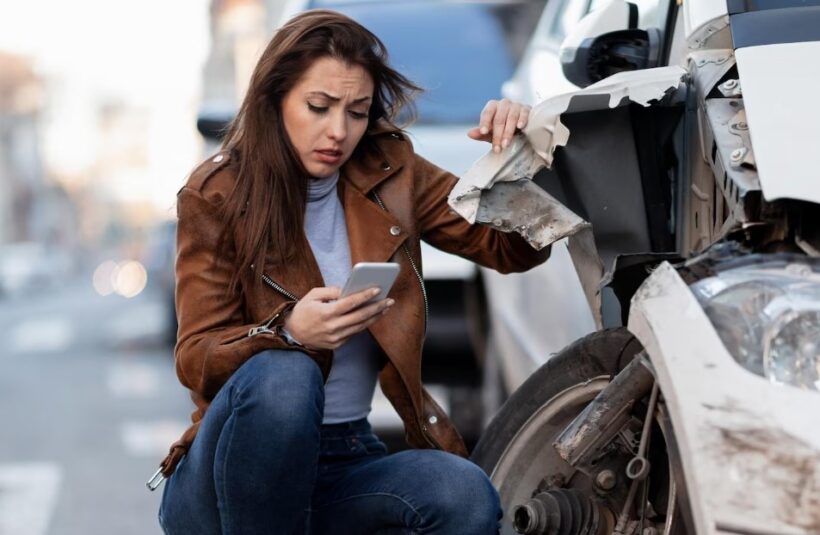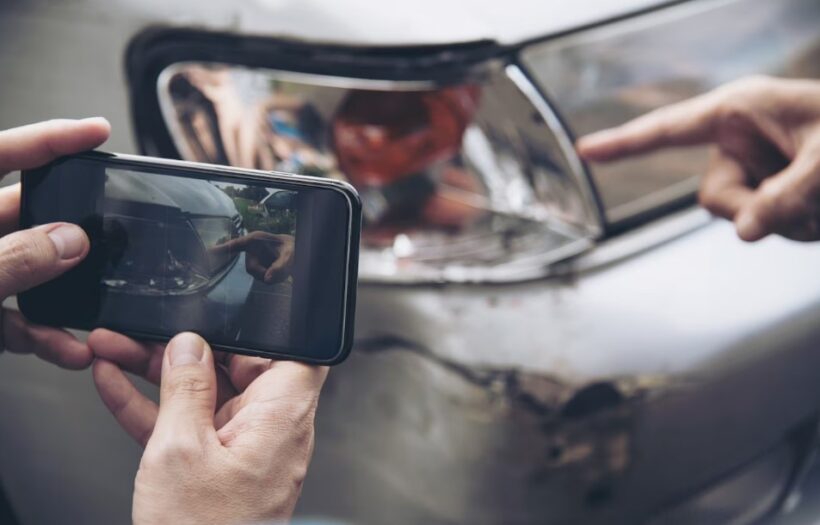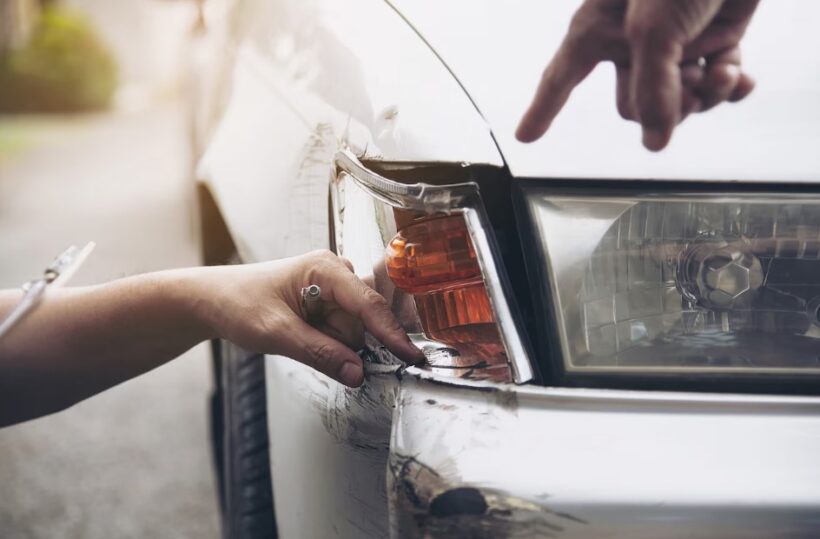Car accidents are often quite scary and can traumatize you in lots of ways. From minor collisions to a major crash, these incidents can be pretty nerve-wracking and test even the most level-headed drivers.
In those heart-pounding moments after an accident, it’s easy to lose your composure and get confused about what to do next. But knowing what steps to take after a car accident is extremely important and can save you from a lot of trouble.
So, after being in a car accident, here are the essential steps you should take to protect your rights and ensure you handle the situation responsibly.
1. Stay Calm

Immediately after a car accident, your emotions may be running high, but it’s crucial to remain as calm as possible.
Understand that panicking will not help you make the right decisions at that time and might cloud your judgment. So, take a deep breath, and check yourself and any passengers accompanying you for any injuries.
Look for visible wounds, pain, and discomfort you’re facing. Call 911 and calmly describe your current situation and the location of the incident.
If someone is seriously injured, don’t try to move them without consulting with the emergency services. Keep in mind that injuries such as internal bleeding or whiplash may not be immediately apparent.
You must seek medical attention when the emergency service arrives, even if you’re not feeling pain. If you are unharmed, but your vehicle has taken the brunt of it, check in with your lawyer to learn how to proceed from here.
If you don’t have a lawyer, contact any renowned local law firms. For example, you can contact the Car Accident Attorney at Villasenor Law Offices if you live in San Deigo.
2. Move to a Safer Location
If your car is in a position that obstructs traffic or poses a safety risk, immediately move it to the side of the road or a nearby location where it’s safe. Keep your hazard lights on to warn other drivers of the accident.
If your vehicle is too damaged to move or you’re unsure of its safety, stay in the car and keep your seatbelt fastened until help arrives.
3. Contact Law Enforcement

One of the very first things you should do right after being in a car accident is to contact the local law enforcement agency immediately. Regardless of the accident’s severity, reporting the incident to the authority is a must.
After Contacting the law enforcement agency, wait for them to arrive at the scene. When the police arrive, elaborately tell them with accurate and honest information about what happened. Don’t leave any information; even the tiniest details can become a crucial point of the investigation.
The police report will contain essential details about the accident, including statements from involved parties and witnesses. So, make sure that your narrative matches the description.
4. Exchange Information
While you’re waiting for the police to arrive, you can exchange information with the other parties involved in the accident if they’re willing.
For instance, you can obtain their names, contact numbers, addresses, driver’s license numbers, license plate numbers, and insurance information. Be sure to provide the same details to them as well.
If the driver of another vehicle is not the owner, try to take their details. But if they’re not willing to give you their personal details, it’s better not to force them and let the authorities handle the situation.
Stay courteous and cooperative during this process, but avoid discussing the accident’s details or admitting fault.
5. Gather Evidence
If it is safe to do so, take pictures of the accident scene and the damage to all vehicles involved in the accident.
Capture different angles and wide shots with your phone to document the position of the cars and the surrounding environment.
Also, take photos of any visible injuries or property damage after the accident. Additionally, take pictures of any skid marks on the road and traffic signs that may be relevant to the accident.
These pictures can be a vital part of the investigation and help authorities measure the total damage caused by the accident.
6. Witness Statements
If there are any witnesses to the accident, politely ask if they’d be willing to provide a brief statement about what they saw.
You might also ask for their contact information so that you can seek their help in the future. Witness statements can be valuable evidence, especially if there are conflicting accounts of the accident.
The police may interview witnesses, so having their contact information can help your insurance company or attorney follow up if needed.
7. Document the Accident Scene

In addition to taking photographs, you can also make a written record of the accident scene if you have time. For that, you can write down a detailed description of what happened, the road and weather conditions at the time of the accident.
In the written description, you must include information such as traffic signals, road signs, and the speed limit in the area. This documentation can help you remember crucial details later on and provide a clear account of the incident if needed for insurance or legal purposes.
8. Contact Your Insurance Company

After the local authorities arrive at the scene, contact your insurance company as soon as possible to report the accident.
Many car insurance policies require immediate reporting, so don’t delay in making the call. Provide your insurer with accurate and comprehensive information about the accident.
Make sure your description matches the one you gave to the local authorities as they will be checked during the investigation. Stick to the facts while describing what happened and avoid making any assumptions or admitting fault. Your insurance company will guide you through the claims process and advise you on the next steps.
9. Be Careful with Insurance Adjusters
After reporting the accident to your insurance company, an insurance adjuster will likely contact you to gather more information about the incident.
In that case, we suggest you be cautious when speaking with the adjuster. They might try to pin the blame on you and deprive you of your insurance claim.
So, stick to the facts and avoid speculating or providing unnecessary details. Keep your discussions limited to the basics and avoid accepting fault or making statements that may later be used against you.
Understanding Your Legal Rights

After a car accident, you have to be aware of your legal rights and responsibilities to protect yourself from false claims. Here are some key points to consider:
● Fault and No-Fault States
The first thing to understand is whether you are in a “fault” or “no-fault” state. In fault states, the driver who caused the accident must compensate the other parties for their injuries and damages.
In no-fault states, the insurance company of both parties will pay for their respective policyholder’s damages, despite of who caused So, familiarize yourself with the laws in your state, as they can significantly impact how your claim is processed.
● Statute of Limitations
Every state has a statute of limitations, which is the time frame within which you must file a lawsuit after a car accident. The timeframe varies from state to state, but generally, it ranges from one to three years. Failing to file a lawsuit within the statute of limitations could result in losing your right to seek compensation for your injuries and damages.
● Insurance Coverage
Understanding your insurance coverage is also an important factor. Liability insurance covers the damages you may cause to others, while collision insurance covers any damage to your car.
Comprehensive insurance covers damages that aren’t related to road accidents, such as theft or vandalism. Uninsured motorist coverage can protect you if the at-fault driver doesn’t have insurance or has insufficient coverage.
● Contributory Negligence and Comparative Fault
In some states, the concept of contributory negligence or comparative fault may apply. Contributory negligence means if you were partially at fault for the accident, you might not be entitled to any compensation.
Comparative fault, on the other hand, allows you to receive compensation proportionate to your level of fault.
● Legal Representation
In complex cases or when significant injuries are involved, consulting a personal injury attorney can be beneficial.
An experienced attorney can guide you through the legal process, help protect your rights, and ensure you receive fair compensation for your injuries and damages. They can also handle communication with insurance companies and negotiate on your behalf.
Preserve Evidence for Your Claim
To strengthen your insurance claim or potential legal case, preserve all relevant evidence related to the accident. This includes documents like medical records, repair estimates, receipts for medical expenses, and any other documents that may be related to the accident.
Keep all communication with insurance companies and other parties involved in writing.
Conclusion

Experiencing a car accident can be challenging and overwhelming, even for strong-minded people. But if you know the necessary steps to take after the incident, you can easily handle the aftermath more effectively.
With these tips mentioned above and suggestions, you’ll be better equipped to protect your rights and seek fair compensation for your injuries and damages.

